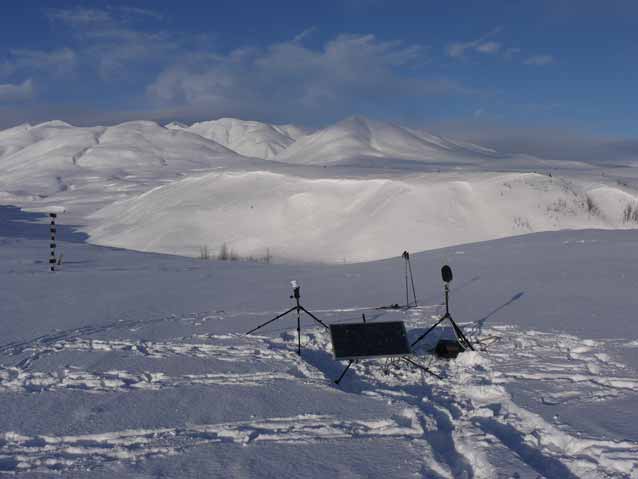
NPS Photo
A unique relationship between sled dogs and scientific research has been occurring in Denali since before the lands were set aside as a national park in 1917. Charles Sheldon, known as the “Father of Denali National Park,” employed Harry Karstens, who later became the park’s first superintendent, and his team of sled dogs to assist in wildlife studies during the winters of 1907-1908. Since the early 1920s, Denali’s sled dogs have been assisting park staff with a variety of research projects.
Park dog teams were used extensively during the mid-1980s by park biologists studying predator/prey relationships of wolves. In recent years the teams have hauled sound monitoring equipment to various backcountry locations (see Hults and Burson article, this issue) and have collected snow sampling data. They are also used to help in the historical restoration of some of the backcountry cabins.

NPS Photo
A U.S. National Weather Service Cooperative Weather station located at the kennels has collected weather and climatological data daily for over 80 years, making it one of the most prized climate data sets available in Alaska. In addition, the sled dogs have made it possible to conduct ground based censuses of golden eagles returning to nesting locations.
Sled dogs provide a perfect tool for researchers accessing wilderness areas during winter months. This approach helps to minimize use of helicopters and is more aesthetically compatible with the philosophy of wilderness (as defined by the Wilderness Act) than motorized vehicles.
Though dog team travel to remote locations will often mean a much slower means of access to research locations, and will likely incorporate a new set of challenges, the continued use of dog teams as a viable research tool is a priority for park management.
Part of a series of articles titled Alaska Park Science - Volume 5 Issue 1: Scientific Studies in Denali.
Previous: Scientific Legacy of Denali
Last updated: April 22, 2019
